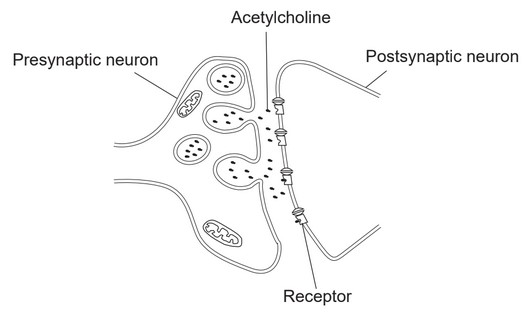Question
The diagram shows the synaptic transmission of nerve impulses by the neurotransmitter acetylcholine.
What is the fate of acetylcholine immediately after binding to the receptor?
A. It is pumped into the postsynaptic neuron.
B. It diffuses into the presynaptic neuron.
C. It is broken down in the synaptic cleft.
D. It binds to another receptor in the postsynaptic neuron.
Answer/Explanation
Ans: C
Question
The image shows a neuron.
What is the function of X?
A. Increases the speed of transmission along the axon
B. Increases the rate of exchange of sodium and potassium ions
C. Holds bundles of neurons together to form a nerve
D. Determines the direction of the action potential
Answer/Explanation
Ans: A